Representation in STEM Courses in the United Kingdom: A report published by EngineeringUK found that while girls are well-represented in General Certificate of Secondary Education (GCSE) courses (part of compulsory schooling), such as physics (50%) and mathematics (50%), the percentages of girls’ representation are lowest among entrants in GCSE computing and engineering courses, where they comprised 21% and 14% of students taking these courses in the 2020-2021 academic year. Moreover, girls’ representation is among the lowest among entrants in A-level physics and computing courses, where they represented 23% and 15%, respectively. While their representation has almost doubled in A-level computing courses since 2012-13, their representation remains relatively the same in A-levels physics. Despite their low representation at entry, young women’s representation among those who pass A-level courses is comparable to their entry rates, particularly for computing (15.2%) and physics (24.1%) A-level courses, suggesting that young women who enter A-level courses tend to pass these courses.
Note: The GCSE is the General Certificate of Secondary Education, a recognized qualification in the United Kingdom among students in secondary education and is part of compulsory schooling in the UK. This is necessary before students can take the General Certificate of Education (GCE) Advanced Level or A-level courses. These A-level STEM courses are prerequisites for students to pursue STEM fields at the university level.
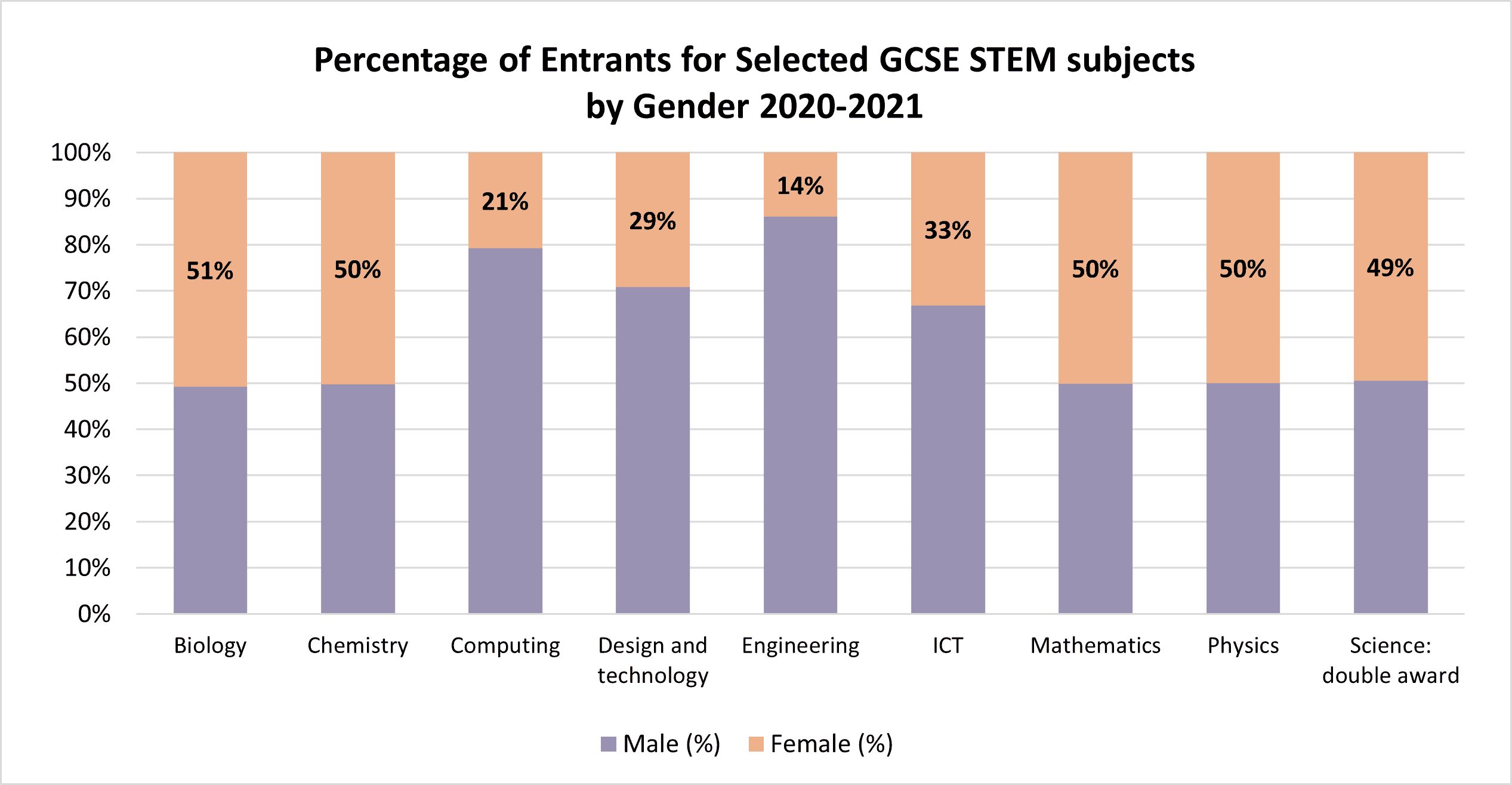
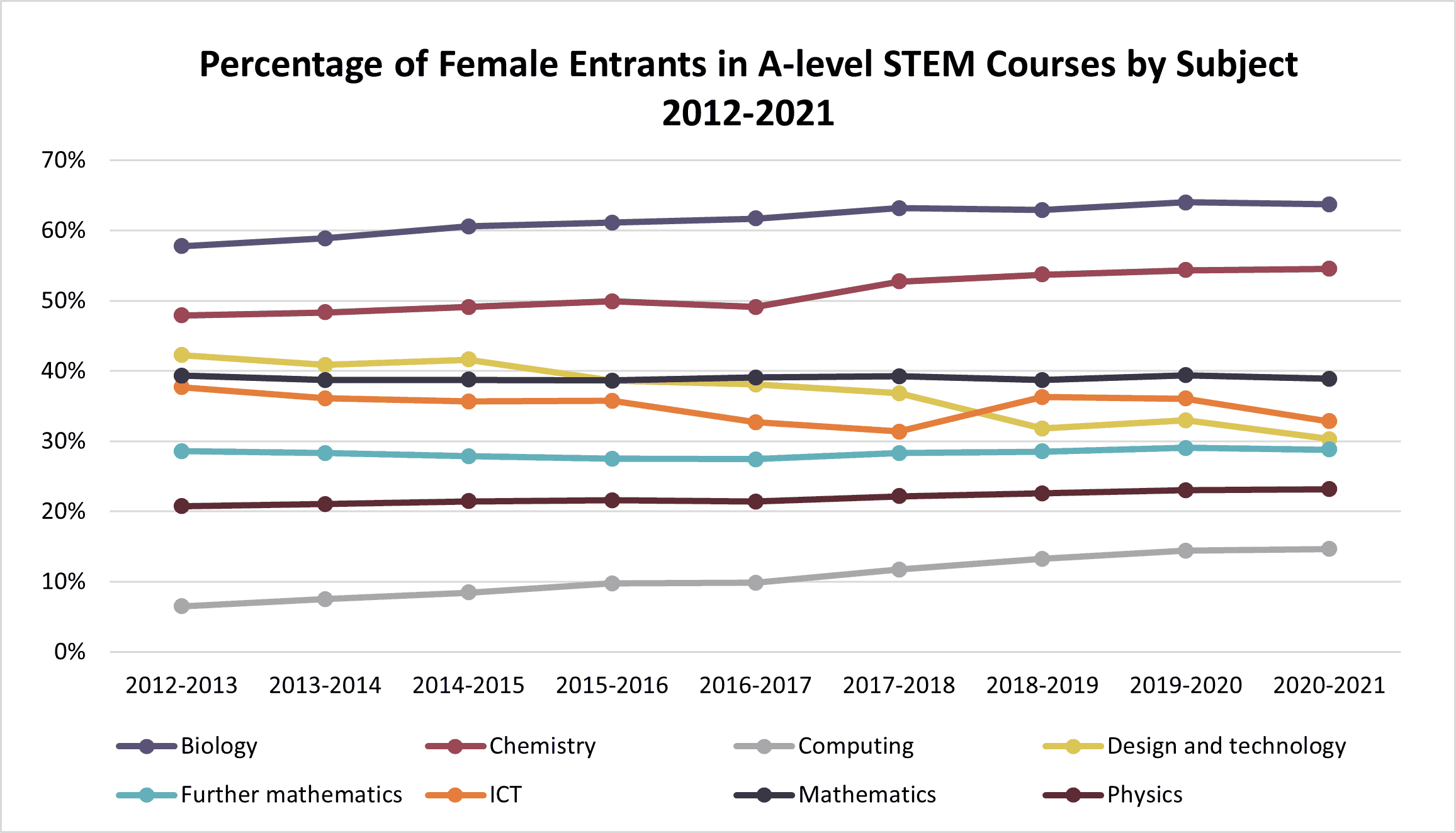
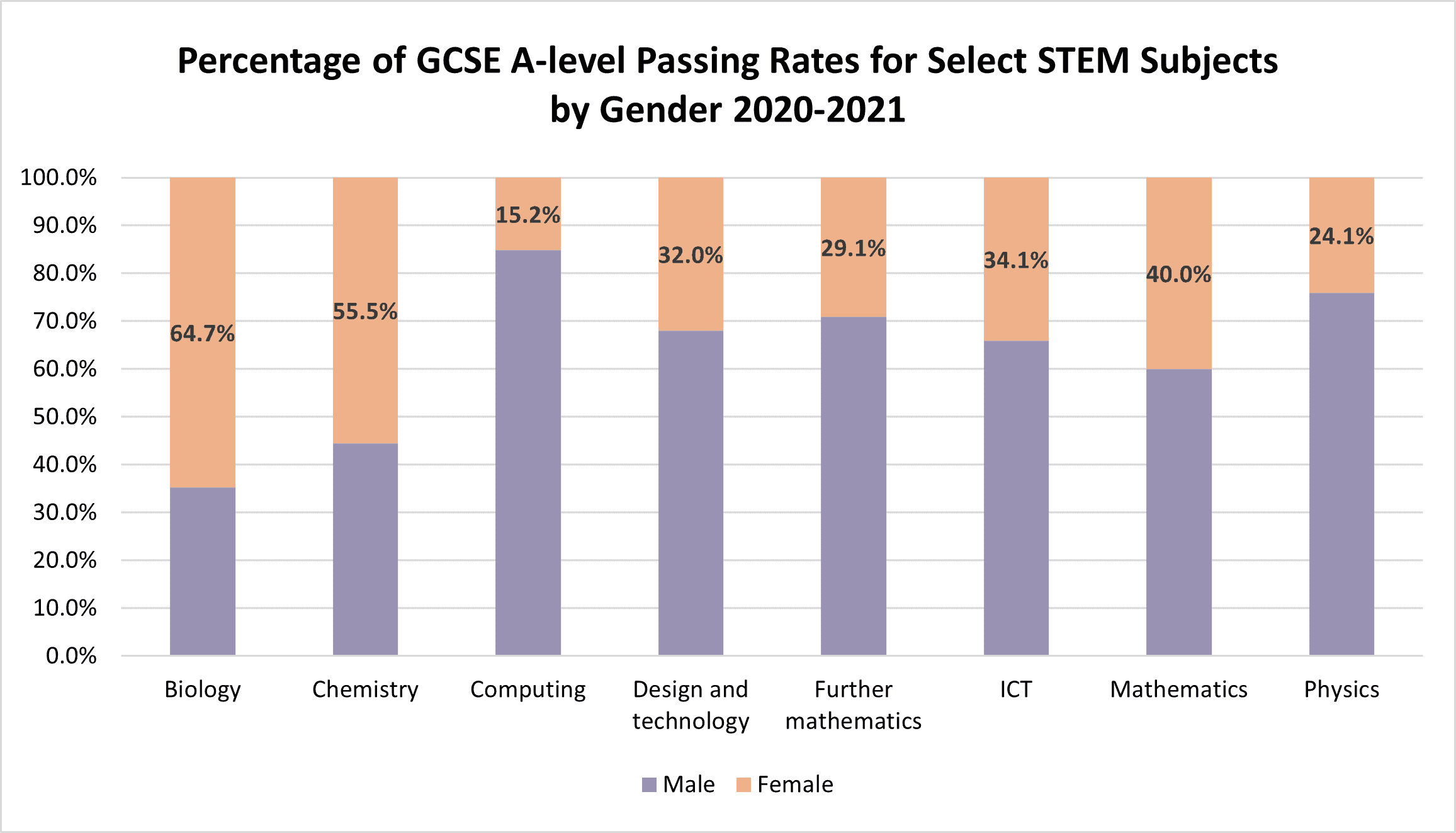
Engineering Self-Efficacy: The Engineering Brand Monitor surveyed girls and boys on their perceptions about engineering in 2019, particularly about their ability to become an engineer, or their engineering self-efficacy, which was also included in the EngineeringUK 2020 report. Across all age groups, a higher proportion of boys than girls tended to express a strong engineering self-efficacy. However, a slightly lower percentage of older cohorts of boys than younger boys reported a strong engineering self-efficacy. On the contrary, the percentage of girls reporting a strong engineering self-efficacy remained about the same across all three age groups.
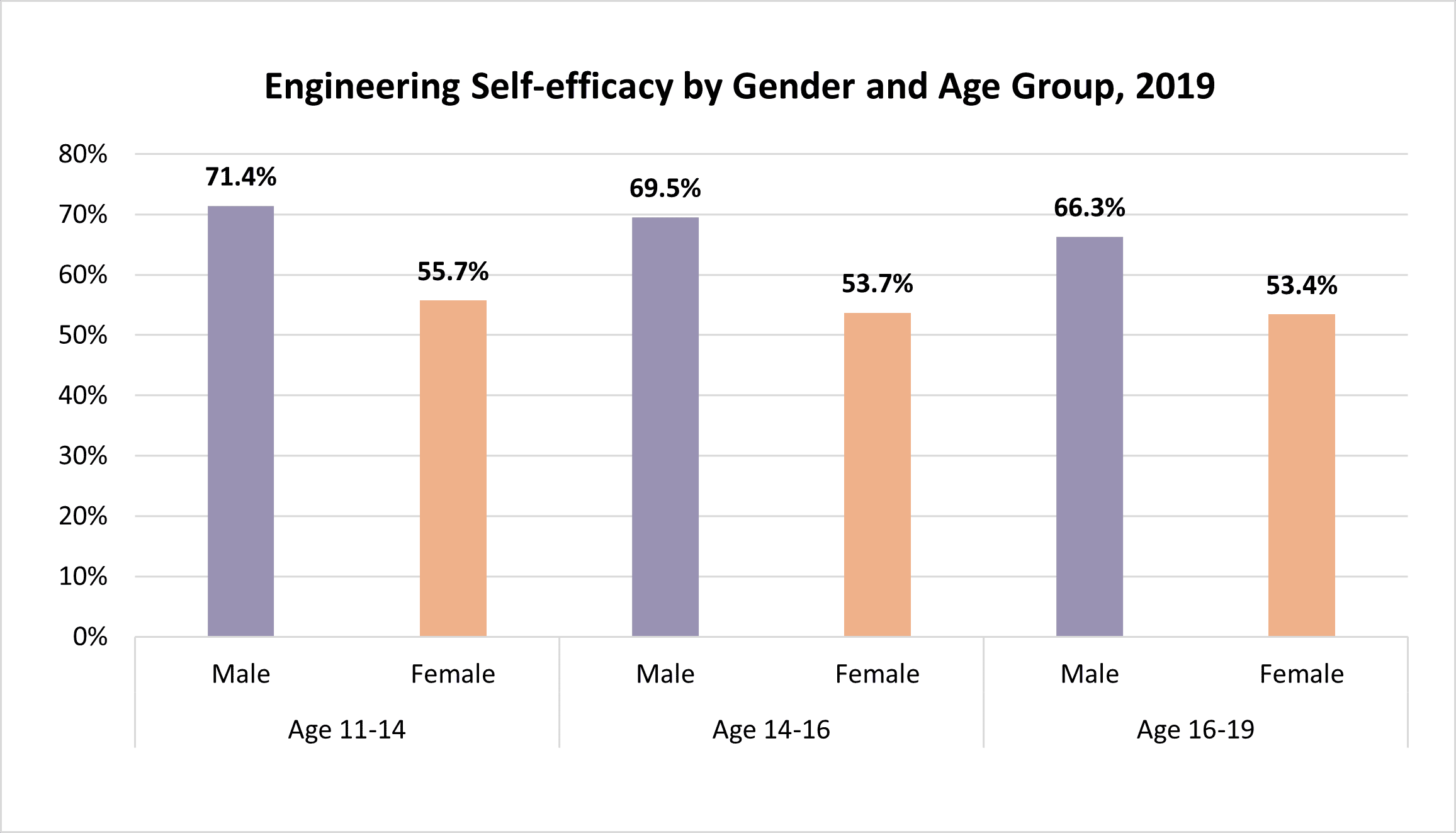
PISA 2018 Results and Science Career Expectations: In the most recent OECD’s Programme for International Student Assessment (PISA) assessment conducted in 2018, 15-year-old students from the UK participated. In mathematics and science, UK students’ average scores were higher than those of students from OECD countries. The average score of UK boys was higher compared to the mean score of UK girls for both the mathematics and science portions of the PISA.
Young adolescents from the UK were also surveyed about their science career expectations in the 2018 PISA survey. For boys and girls, a slightly higher percentage of UK students than those from OECD countries expect to work as science or engineering professionals. Specifically, 8.8% of UK girls, compared to the OECD average of 7.1%, expect to work as a science and engineering professionals. Similarly, 18.9% of UK boys have these science and engineering career expectations compared to the OECD average of 15.2% of boys.
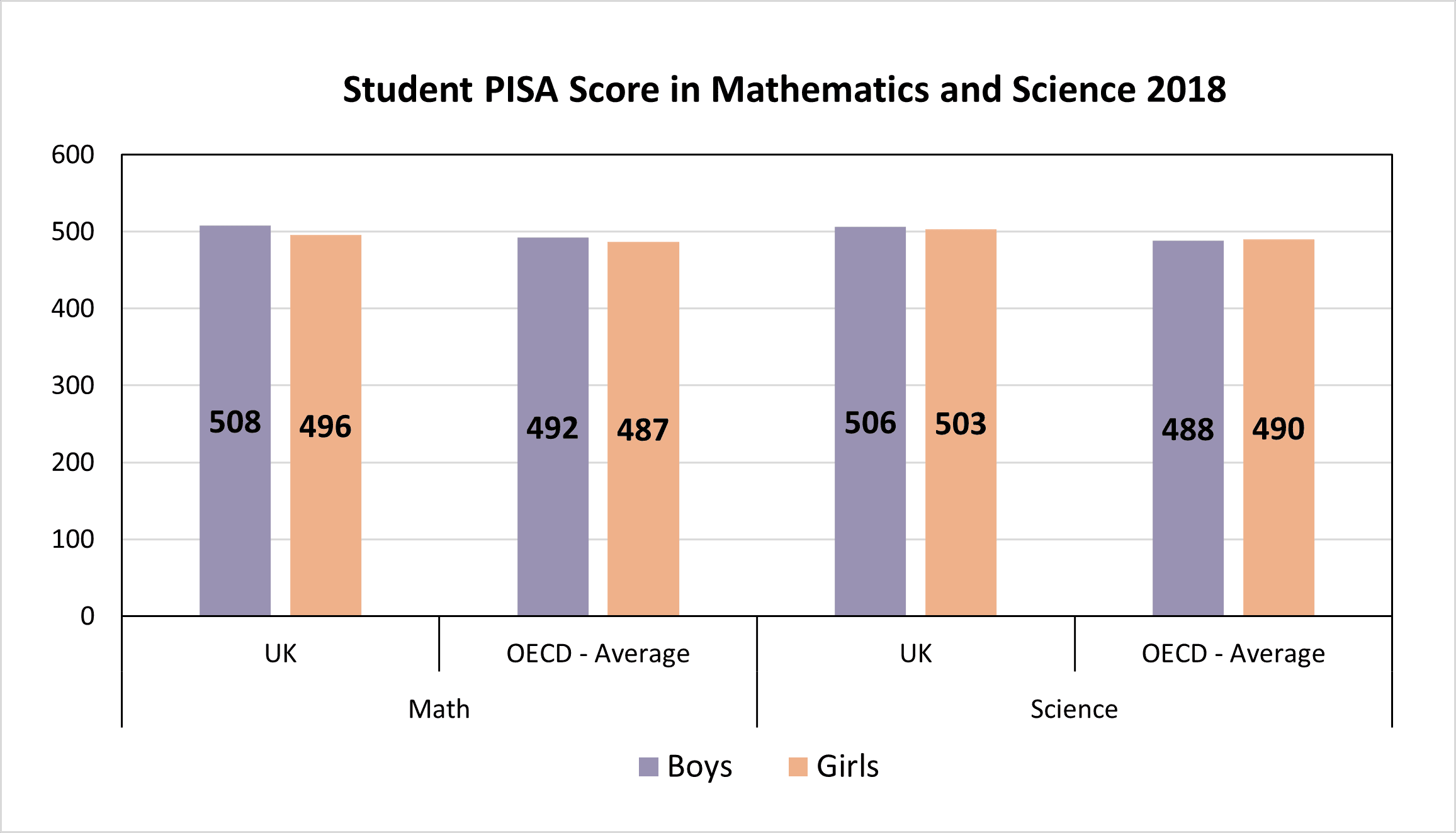
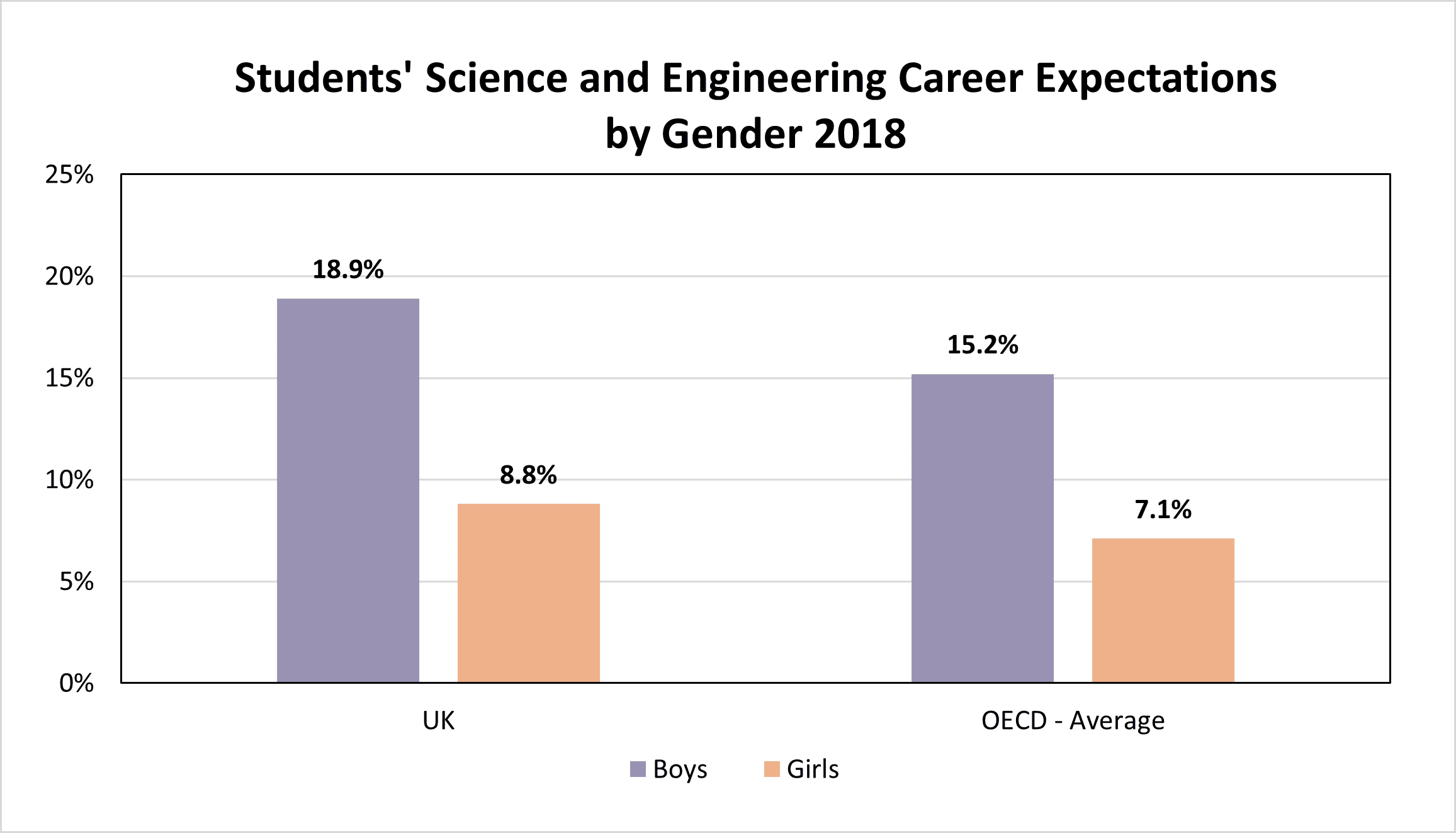
Additional Resources
- EngineeringUK (2020). Excel Resource 2022, Secondary education and engineering.
- OECD, PISA 2018 Database.